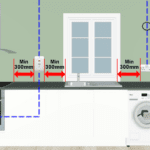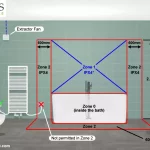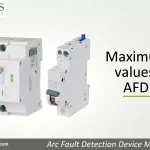Are sockets and spurs permitted in kitchen cabinets and cupboards?
Sockets, spurs and any other electrical accessory needs to be readily accessible, A socket or spur in the back of a kitchen cupboard might be considered not readily accessible if the socket, spur or isolator is obstructed by the items stored inside that cupboard or it is out of reach i.e. at high level.
A socket behind an appliance such as an integral fridge freezer, dishwasher or washing machine would deem the socket to not be readily accessible therefor a readily accessible isolator or switched fused spur would likely be required to control the non-accessible socket.
The Electricians Guide to the Building Regulations section 5.2.2 – Locations of accessories in kitchens, indent (vi) states: To prevent damage to the plug top and flexible cable on insertion and withdrawal the center of a socket-outlet should be a minimum of 150mm above the work surface.






